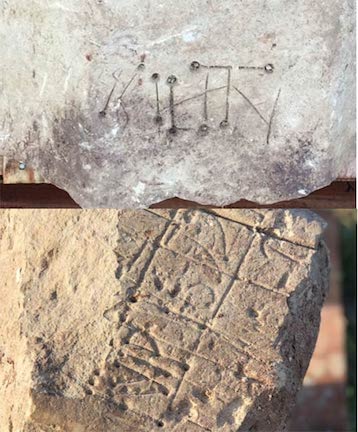Echoes Are All I See
By marcella faustini, for Art Practical
September 10, 2015
“No one lives but me, shadows are my only friends, and ghosts are all I see.”
—Minimal Man, “Loneliness,” from The Shroud Of, 1981.
Despite the gentrifying pressure of high real-estate prices, the history of San Francisco’s underground culture and some of its notorious characters still haunts the city. Such is the case with Minimal Man, an early ’80s band fronted by Patrick Miller. The band, with a blend of post-punk, noise, and industrial music, produced six albums and numerous singles with a rotating cast of members. Although its output remains semi-obscure, the band has a cult following among enthusiasts of genre-bending music. Great interest is also derived from Miller’s erratic life, which took him to a handful of cities in the United States and Europe, leaving a trail of stories that are recounted and mythologized as part of the subculture of the cities he inhabited.
The documentation of the band’s existence while in San Francisco is scattered. Between previously published articles, phone calls, and email exchanges with members from different incarnations of the band, a semblance of the band’s trajectory can be pieced together.
Minimal Man’s sound is often grouped with industrial music and bands like Chrome, Suicide, and NON, although Miller claimed to have eschewed style categories when making the music. His musical premise was to rely upon synthesizers rather than guitars for the sound.
The first album, The Shroud Of (1981), sounds as if someone is singing from a far room. The lyrics touch on uneasy subjects such as alienation and despair, and the combination of synths and noise creates an ominous atmosphere. The music’s influences of punk and noise gave way to industrial sounds and hints of electronic body music (EBM, a danceable combination of postindustrial music and synth-punk); this last development came about during Miller’s time in Belgium, where EBM first developed.
The course of the band’s musical development is uneven. There are backward nods to arena rock in Safari (1984) and a disparate choice of more conventional instruments for Hunger is All She Has Ever Known (1988). But Minimal Man reached its highest point when it
merged noise, industrial, punk, and cold wave, creating dark and powerful moments conducive to solitary dancing with shut eyes and clenched fists. Both The Shroud Of and Sex with God (1985) are examples of this successful intersection of musical styles.
 Thanks to: Brooklyn Street Art, r/stencils, Stencil Art FB group, r/streetart
Thanks to: Brooklyn Street Art, r/stencils, Stencil Art FB group, r/streetart

 The San Francisco Uploads...photo of MR tape-up on Market St.
The San Francisco Uploads...photo of MR tape-up on Market St. Thanks to: Eleni, s/stencils, Brooklyn Street Art (Jaime Rojo), and only_stencil_archive (IG)
Thanks to: Eleni, s/stencils, Brooklyn Street Art (Jaime Rojo), and only_stencil_archive (IG) We rarely do archive overhauls these days. Since this is a volunteer-run site, there appears to never be enough time to tackle incorrect spellings, generic filenames, and other photo data changes. Over on the
We rarely do archive overhauls these days. Since this is a volunteer-run site, there appears to never be enough time to tackle incorrect spellings, generic filenames, and other photo data changes. Over on the  Banksy trademark 'at risk' after street artist loses legal battle
Banksy trademark 'at risk' after street artist loses legal battle Britain’s Oldest Example of Christian Graffiti Found Near Hadrian’s Wall
Britain’s Oldest Example of Christian Graffiti Found Near Hadrian’s Wall